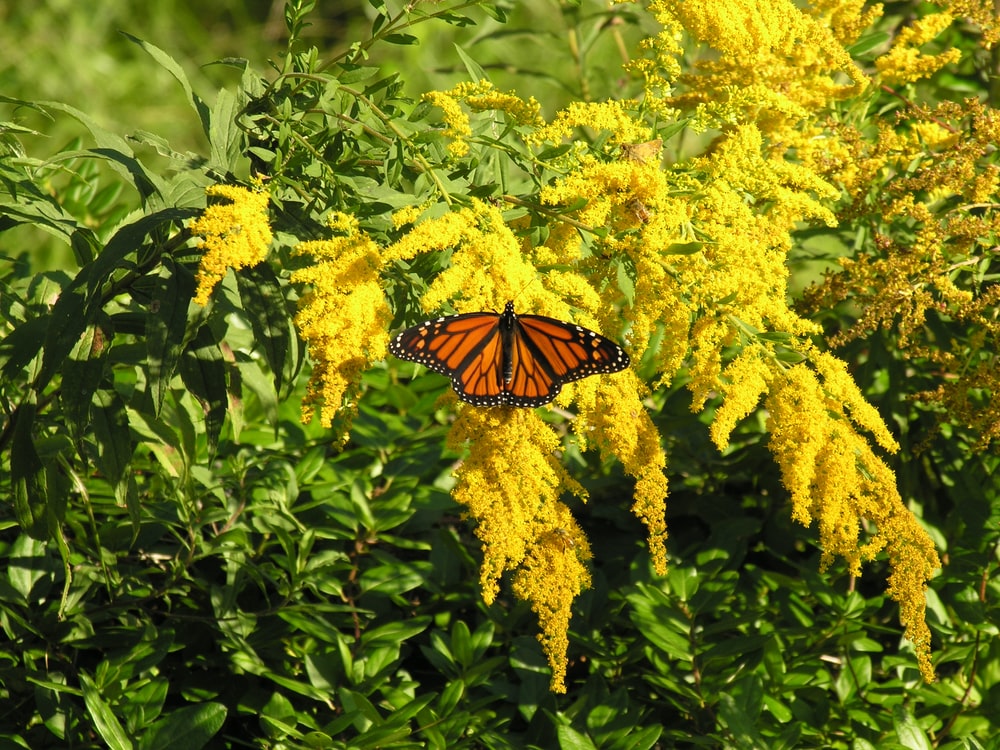Monarchs are on the move, and one of their favorite energy drinks is in full bloom! But pity the poor goldenrod: This brightly colored, much-maligned native is often blamed for fall allergies. But when you know a little about pollination, you realize that it’s really not such a bad guy!
The part of a plant that causes allergic reactions such as sneezing and itchy eyes is pollen. Some plants are wind-pollinated—they have a multitude of very light pollen grains that are easily blown from plant to plant by the wind, and are just as easily inhaled by us. Some examples of wind-pollinated plants include most grasses and trees.
Other plants have relatively heavy pollen grains that don’t blow about as easily (and therefore aren’t as likely to be inhaled in large quantities). These plants rely on pollinators to carry their pollen from one plant to the next. Goldenrod is one such insect-pollinated plant.
Goldenrod is a crucial source of late-season nectar for pollinators. Its bright yellow blooms are a signal to us that monarch migration is underway, and that other pollinators are beginning to make a transition to winter. Once the frosts have come and the plant dies, it provides important winter shelter for pollinators.
So if you’re feeling a bit stuffy right now—don’t blame goldenrod! It’s much more likely that ragweed (whose microscopic pollen grains can blow for hundreds or even thousands of miles!) is the cause of your discomfort.
Photo: Michael Barrick


 RSS Feed
RSS Feed